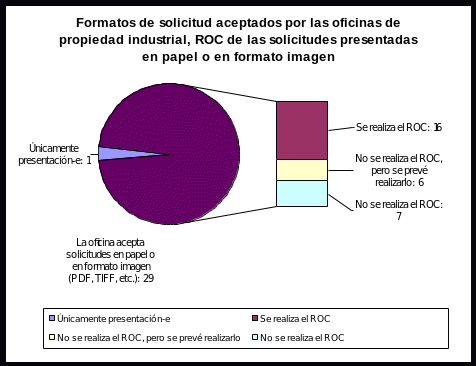COUNTING TECHNIQUE COUNTING TECHNIQUES OBJECTIVES 1 STUDENT SHOULD BE
COURSE TITLE BUS030150FINANCIAL ACCOUNTING BRIEF DESCRIPTION(11 CCR 25081) 5000 FINANCE AND ACCOUNTING [REV EFF
1 ABACUSA JOURNAL OF ACCOUNTING FINANCE AND BUSINESS STUDIES
145 REVISED 62016 ACCOUNTING PRINCIPLES AND STANDARDS HANDBOOK CHAPTER
15 COMMENTS DUTCH ACCOUNTING STANDARDS BOARD (DASB) ON EXPOSURE
2 APPENDIX B RULES FOR COUNTING THE NUMBER OF
Teknik Pengiraan
Counting Technique
COUNTING TECHNIQUES
OBJECTIVES
Student should be able to understand all types of counting techniques.
Students should be able to identify the three techniques learned.
Students should be able to use each of the counting techniques based on different questions and situations.
What, Which, Where, When
Permutation
Redundant elements (Clear / Not Clear)
Non-redundant elements (Clear / Not Clear)
The use of nPr (Clear / Not Clear)
Combination
Non-redundant elements (Clear / Not Clear)
The use of nCr (Clear / Not Clear)
Pigeonhole
Pigeonhole Principle (Clear / Not Clear)
Identifying n and m (Clear / Not Clear)

Kolman, Busby and Ross page 78 – 91
Rosen 4th Ed page 232 – 259
Rosen 5th Ed page 301 – 326
Jonsonbaugh page 165 – 218
Mattson page -
COUNTING TECHNIQUES
n = 4, r = 3, then nr = 43 = 64 words
A sequence of r elements from n elements of A is always said as ‘permutation of r elements chosen from n elements of A’, and written as nPr or P(n, r)
Theorem 4
If 1 r n, then nPr is the number of permutation of n objects taken r at a time, is
n(n-1)(n-2)… (n-(r - 1))
When r = n, that is from n objects, taken r at a time from A, where r = n, it is a nPn or n factorial, written as n!.
 4P3
= 4.3.2.1
4P3
= 4.3.2.1
1
= 4.3.2
= 24 (ex: pqr, pqs, prq, prs, psq, psr, …….)
Ex 5: Choose 3 alphabets from A..Z


 26P3 =
26.25.24.23 …. 3.2.1
26P3 =
26.25.24.23 …. 3.2.1
23.22……3.2.1.
= 26.25.24
Theorem 5
The number of distinguishable permutations that can be formed from a collection of n objects where the first object appears k1 times, the second object appears k2 times, and so on, is:
 n!
n!
k1!k2!…ki!
Ex 6: a) MISSISSIPPI b) CANADA
Combination
Order does not matter.
Theorem 1
Let A be a set with |A| = n, and let 1 r n. Then the number of combinations of the elements of A, taken r at a time, written as nCr, is given by
 nCr
= n!
nCr
= n!
r! (n - r)!
Ex 7: If A = {p, q, r, s}, find the number of combination for 3 elements.
 4C3
= 4.3.2.1
4C3
= 4.3.2.1
3.2.1.1
= 4 (ex: pqr, pqs, prs, qrs) (pqr, prq, rpq, rqp, all are the same)
Theorem 2
Suppose k selections are to be made from n items without regard to order and repeats are allowed, assuming at least k copies of each of the n items. The number of ways these selections can be made is (n + k -1)Ck.
Ex 8: In how many ways can a prize winner choose three CDs from the Top Ten list if repetition is allowed?
 n
= 10 and k =
3, so, (10 + 3
-1)C3
= 12C3
= 12.11.10.9.8….1
n
= 10 and k =
3, so, (10 + 3
-1)C3
= 12C3
= 12.11.10.9.8….1
3.2.1.9.8….1
= 2.11.10
= 220 ways.
Pigeonhole
Pigeonhole Principle is a principle that ensures that the data is exist, but there is no information to identify which data or what data.
Theorem 1
If there are n pigeon are assigned to m pigeonhole, where m < n, then at least one pigeonhole contains two or more pigeons.
Ex 9: if 8 people were chosen, at least 2 people were being born in the same day (Monday to Sunday). Show that by using pigeonhole principle.
Because there are 8 people and only 7 days per week, so Pigeonhole Principle says that, at least two or more people were being born in the same day.
Note that Pigeonhole Principle provides an existence proof.
Ex 10: Show that if any five numbers from 1 to 8 are chosen, two of then will add to 9.
Two numbers that add up to 9 are placed in sets as follows:
A1 = {1, 8}, A2 = {2, 7}, A3 = {3, 6}, A4 = {4, 5}
Each of the 5 numbers chosen must belong to one of these sets. Since there are only four sets, the pigeonhole principle tells us that two of the chosen numbers belong to the same set. These numbers add up to 9.
The Extended Pigeonhole Principle
If there are m pigeonholes and more than 2m pigeons, three or more pigeons will have to be assigned to at least one of the pigeonholes.
Notation
If n and m are positive integers, then n/m stands for largest integer less than equal to the rational number n/m.
3/2 = 1, 9/4 = 2 6/3 = 2
Theorem 2
If n pigeons are assigned to m pigeonholes, then one of the pigeonholes must contain at least
(n-1)/m + 1 pigeons.
Exercise:
Find the number of order to choose 3 letters from the word COMPUTER
Without repetition
With repetition
How many choice are there if the student must answer:
8 questions out of 10 questions?
8 questions out of 10, but the first 3 are compulsory questions.
Find the number of choice to choose 3 men and 5 women from a group of 23 men and 14 women.
Given ABCDEF as 6 persons. How many ways are there to make sure that DEF always sits next to each other, in that order.
Given ABCDEF as 6 persons. How many ways are there to make sure that DEF always sits next to each other but not necessarily in that order.
Show that if there are 30 students in a class, at least the name of 2 students must start with the same letter.
How many students should be in a class to ensure that at least 5 students get the same grade if grades available are A, B C, D and E?
20 41 ACCOUNTING FOR PENSIONS AND POSTRETIREMENT BENEFITS
23 FEBRUARY 2006 SIR DAVID TWEEDIE CHAIRMAN INTERNATIONAL ACCOUNTING
24 JUNE 2009 SIR DAVID TWEEDIE INTERNATIONAL ACCOUNTING STANDARDS
Tags: counting technique, - counting, counting, should, student, technique, techniques, objectives
- 16 ORLE 151 LEADERS IN GRASSROOTS ORGANIZATIONS INSTRUCTOR CHERYL
- GUIDE TIL AFHOLDELSE AF DEN FOREBYGGENDE SAMTALE DENNE GUIDE
- 6 UNIDAD 6 COMUNICACIÓN ORAL Y ESCRITA NOMBRE
- MONTANA UNIVERSITY SYSTEM STAFF COMPENSATION PLAN INDIVIDUAL PROGRESSION PLAN
- KIELCE DNIA …………………………………… (DDMMRRRR) URZĄD MIASTA KIELCE WNIOSEK O
- 4 REPETICIÓN RAD 50001233300020140023900 POLICÍA NACIONAL VS HENRY NARANJO
- PARLER FINIR COURIR MOURIR VENIR TENIR PARTIR SORTIR DORMIR
- SOCIÁLNA POLITIKA TÉZY PRE ŠTÁTNE ZÁVEREČNÉ SKÚŠKY – MAGISTERSKÉ
- ÉTICA ENTORNO DE LA INFORMACIÓN PABLO MURRAY FACULTAD
- ÇAYCUMA VOCATIONAL SCHOOL DEPARTMENT OF ACCOUNTING AND TAXATION ACCOUNTING
- IZJAVA O NAMJERAMA PRE–APPLICATION STATEMENT OF INTENT DIO 1
- PROF ZOFIA KAWCZYŃSKABUTRYM PHD INSTITUTE OF SOCIOLOGY UMCS LABOUR
- SIEGE OF ZARAHEMLA IN THE LATTER END OF
- ALGUNOS CAMINOS POLÍTICAMENTE INCORRECTOS A TRAVÉS DE LO POLÍTICAMENTE
- PQASSO FOR WALES MENTOR PROGRAMME – APPLICATION FORM THIS
- HTTPWWWIPACESACEROFABRICACIONASP 21 INTRODUCCIÓN EL HIERRO EN ESTADO PURO NO
- INSTRUCTIVO CAMBIO DE DOMICILIO (CASA MATRIZ O SUCURSAL) CAMBIO
- PROYECTO BIFAP (BASE DE DATOS INFORMATIZADA PARA LA INVESTIGACIÓN
- CATEGORIZACIÓN DEL PARQUE EDIFICADO PARA LA REHABILITACIÓN ENERGÉTICA DE
- ZAŁĄCZNIK NR 2 OPIS PRZEDMIOTU ZAMÓWIENIA …………………………… WYMAGANIA TECHNICZNE
- TABLE 9 RECOMMENDED EVIDENCE BASED STRATEGIES DISEASE OR CONDITION
- VERMONT AFTERSCHOOL FOUNDATIONS CERTIFICATE APPLICATION OVERVIEW THE VERMONT AFTERSCHOOL
- GASTROENTEROLOGÍA PATOLOGÍAS PERINEALES ANGEL SAINZ HOSPITAL CLÍNICO VETERINARIO
- TEMA 9 LA ECONOMIA EN EL PERIODO DE ENTREGUERRAS
- VEDTÆGT KØGE LILLE SKOLE § 1 HJEMSTED OG
- RYZYKO GRAMI NAZYWAMY SYTUACJE KIEDY WYNIKI O OKREŚLONEJ WARTOŚCI
- 12 ACHIEVEMENT GOALS AND PSYCHOPHYSIOLOGY RUNNING HEAD CHALLENGE AND
- LUNES 30 DE JULIO DE 2018 DIARIO OFICIAL (PRIMERA
- BASES PARA EL OTORGAMIENTO DE BECAS ESTÍMULOS RECONOCIMIENTOS Y
- 19 “I HAVE A DREAM” THE WORK OF A
TEMA 6 NIVELES ASISTENCIALES ORDENACIÓN DE LA ASISTENCIA PRIMARIA
SUGGESTIONS AND OBSERVATIONS FROM THE ACS COURSE IN SOCORRO
MTN028 STUDY STAFF DELEGATION OF DUTIES (DOD) AND SIGNATURE
ESEMPIO DI DÉCOUPAGE – SPOT NESCAFÈ REGIA GABRIELE MUCCINO
 A KADEMIA WYCHOWANIA FIZYCZNEGO WE WROCŁAWIU WYDZIAŁ WYCHOWANIA FIZYCZNEGO
A KADEMIA WYCHOWANIA FIZYCZNEGO WE WROCŁAWIU WYDZIAŁ WYCHOWANIA FIZYCZNEGO UNIT 1 MATHEMATICS FOR ENGINEERING LO1 UNDERSTAND THE
UNIT 1 MATHEMATICS FOR ENGINEERING LO1 UNDERSTAND THENÁZEV PROJEKTU VÝMĚNA ZKUŠENOSTÍ VE STŘEDU MORAVY CÍLE PROJEKTU
65 SZ MELLÉKLET KASZ………………………………RT ZRT KFT STB SZAKSZERVEZETI ALAPSZERVEZETE
 IFU FOR NUMERIS® TETHERED COAGULATION SYSTEM WITH VISITRAX®
IFU FOR NUMERIS® TETHERED COAGULATION SYSTEM WITH VISITRAX® PROCESO EXTRAORDINARIO EVALUATORIO PARA ASCENSO A BRIGADIER MAYOR CBP
LA EDUCACIÓN AMBIENTAL EN LA DÉCADA DE LA EDUCACIÓN
 INVESTITOR OPĆINA KALNIK TRG STJEPANA RADIĆA 5 KALNIK NAZIV
INVESTITOR OPĆINA KALNIK TRG STJEPANA RADIĆA 5 KALNIK NAZIV ZAMAWIAJĄCY OŚRODEK POMOCY SPOŁECZNEJ DZIELNICY TARGÓWEK M ST WARSZAWY
ZAMAWIAJĄCY OŚRODEK POMOCY SPOŁECZNEJ DZIELNICY TARGÓWEK M ST WARSZAWYBELAJAR INVESTASI APA YANG DIHARAPKAN DALAM SEBUAH INVESTASI? RETURN
 MANTENIMIENTO RUTINARIO Y PERIODICO DE LA VIA OBRA “REHABILITACIÓN
MANTENIMIENTO RUTINARIO Y PERIODICO DE LA VIA OBRA “REHABILITACIÓN OESTE AISLANTE WWWOESTEAISLANTECOMAR VENTASOESTEAISLANTECOMAR FUNDADA EN 1949 CUIT 30585766700
OESTE AISLANTE WWWOESTEAISLANTECOMAR VENTASOESTEAISLANTECOMAR FUNDADA EN 1949 CUIT 30585766700LITERATUR ZUM HAUPTSEMINAR SEXUALITÄT GESTALTEN LERNEN SEXUALPÄDAGOGISCHE IMPULSE FÜR
 FORMATO DE PRESENTACION DE PROPUESTAS PARA FINANCIACIÓN FONDO DE
FORMATO DE PRESENTACION DE PROPUESTAS PARA FINANCIACIÓN FONDO DE CWS210 ANEXO PÁGINA 0 RESULTADOS DEL ESTUDIO INTRODUCCIÓN
CWS210 ANEXO PÁGINA 0 RESULTADOS DEL ESTUDIO INTRODUCCIÓN 6 MEZCLAS DE GRANOS GD MENDOZA HA LEE
6 MEZCLAS DE GRANOS GD MENDOZA HA LEE